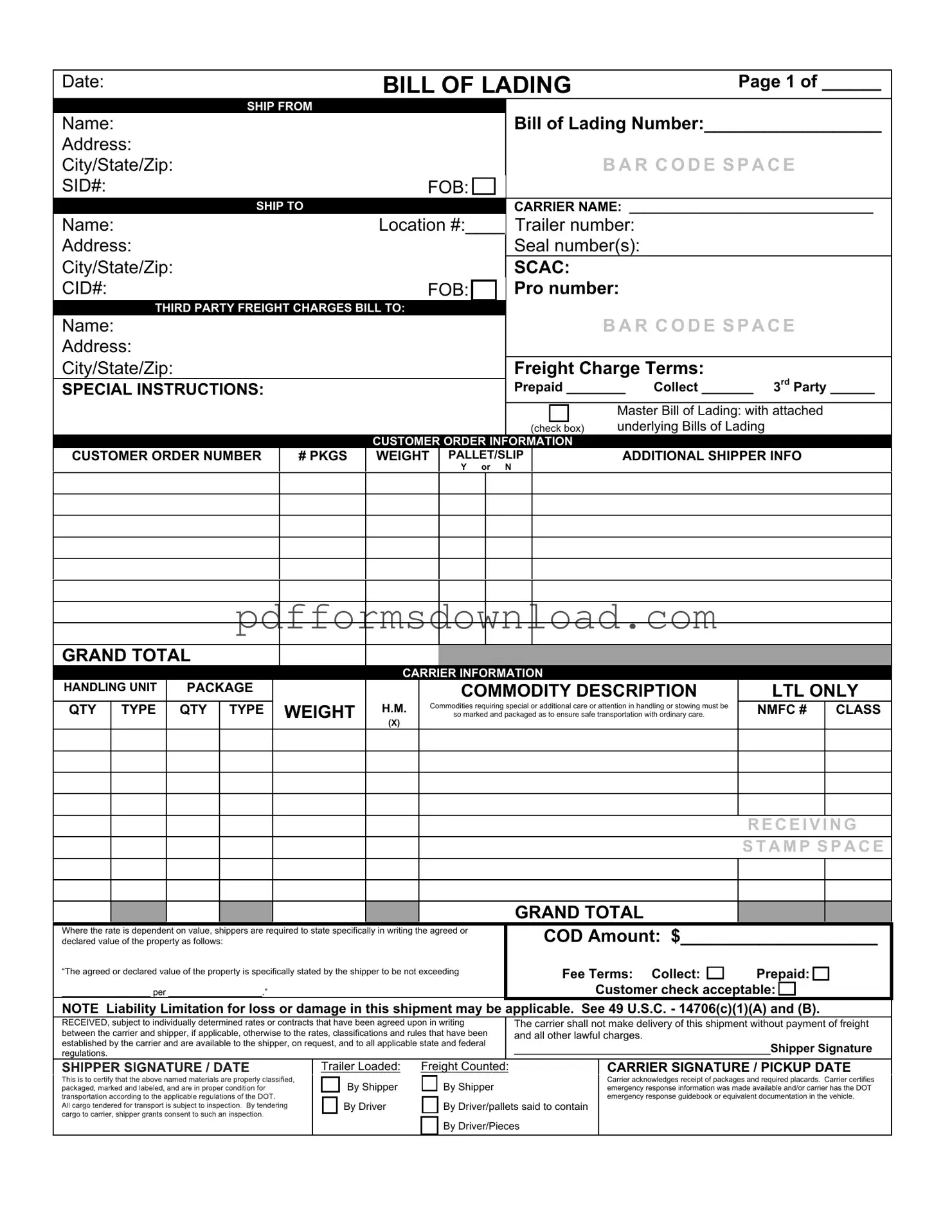What is a Bill of Lading?
A Bill of Lading is a crucial document in the shipping and transportation industry. It serves as a receipt for goods, a contract between the shipper and the carrier, and a document of title. When goods are shipped, the Bill of Lading outlines the details, such as the type of goods, quantity, destination, and the terms of transportation. This document ensures that all parties involved have a clear understanding of the shipment's specifics and protects the interests of both the shipper and the carrier.
What is the purpose of the Supplement form?
The Supplement form is used to provide additional information or amendments to the original Bill of Lading. This can include changes in shipping instructions, updates on the contents of the shipment, or corrections to any errors found in the initial document. By using the Supplement form, all parties can ensure that the Bill of Lading accurately reflects the current status and details of the shipment, which helps prevent misunderstandings or disputes later on.
Who needs to complete the Bill of Lading with a Supplement form?
Typically, the shipper or the freight forwarder is responsible for completing the Bill of Lading and any necessary Supplement forms. However, all parties involved in the shipment, including the carrier and the consignee, should review the documents to ensure accuracy. It's essential that everyone understands the terms and conditions outlined in these forms to facilitate a smooth shipping process and avoid potential issues at the destination.
What happens if there are discrepancies in the Bill of Lading?
If discrepancies arise in the Bill of Lading, it is vital to address them promptly. Any inconsistencies between the Bill of Lading and the actual shipment can lead to delays, additional charges, or even legal disputes. To rectify these issues, the involved parties should communicate immediately and consider using the Supplement form to document any changes or corrections. Clear communication and timely action can help resolve discrepancies and ensure that the shipment proceeds without complications.
